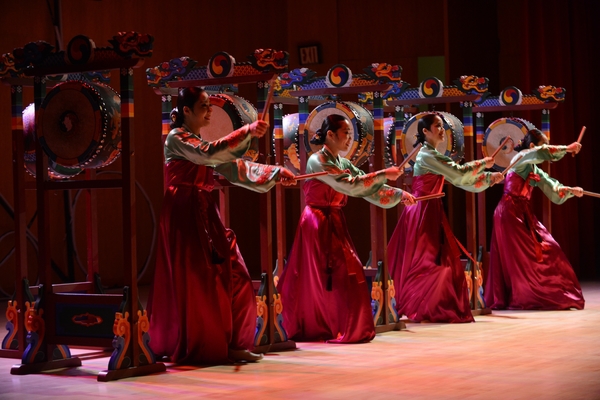
For Koreans, the Lunar New Year is an important national holiday spent with family members and relatives. It has been a Korean tradition that everyone must have Tteokguk (traditional rice-cake soup) in order to become one year older. Have you ever thought about another aspect of the Lunar New Year? On February 8th, The Metropolitan Museum of Art in New York City held a festival that commemorated the Year of the Horse by celebrating Asian culture and traditions. This event was the most successful in outreach toward the Korea Community.
Visitors to the event, both Koreans and non-Koreans, danced to the K-Pop rhythm of MJ Choi team’s “I Love Dance.” Young children were excited to line up and follow the performers’ demonstration. With the events held next to the Korean Gallery, people were truly inspired and curious about Korean art and visited the installation. From ancient Silla to modern K-Pop, the visitors at the Met learned and connected.

Event performances that drew the audience’s particular attention included a Chinese Lion Troupe, traditional Tibetan Dancers, and Indonesian Gamelan (traditional musical ensemble) musicians. One of the main events was Virtuoso Rami Seo’s playing of the Kayakum (Korean instrument) and an exhibition tour in Korean of Silla: Korea’s Golden Kingdom. Fan dances, beautiful green leaves, and three different period wooden Kayakums, took the audience back into the Silla period. “Let us touch with Kayakum together and play” Rami Seo exclaimed with amusement.
The audience’s reacted with wonder at how unexpectedly different the Asian cultures celebrated Lunar New Year. The audience was asked, “What do you think of the Korean culture?” and they replied: “It is magnificent!” People expanded their horizons by appreciating different Asian events. While the audience enjoyed the Chinese handkerchief and ribbon dances, it was the Korean fan dance that filled them with admiration.

The audience stood up and cheered loudly as the brilliant fans with elegant flowers at the edge, reached the climax of the performance. It was especially rewarding to introduce Korea’s most famous fan dance. Even Koreans had a chance to see something rare, a powerful Samgomu (Korean traditional drums) performance. The beats and rhythms immediately got the audience dancing. Although the Silla dynasty heritage and K-Pop culture appear totally different, there is something that connects them. It is the way they fascinate people and bring them together. Lunar New Year has long been a local Asian celebration, but become a global celebration at the Met.
By Boram Jang, Overseas Correspondent

